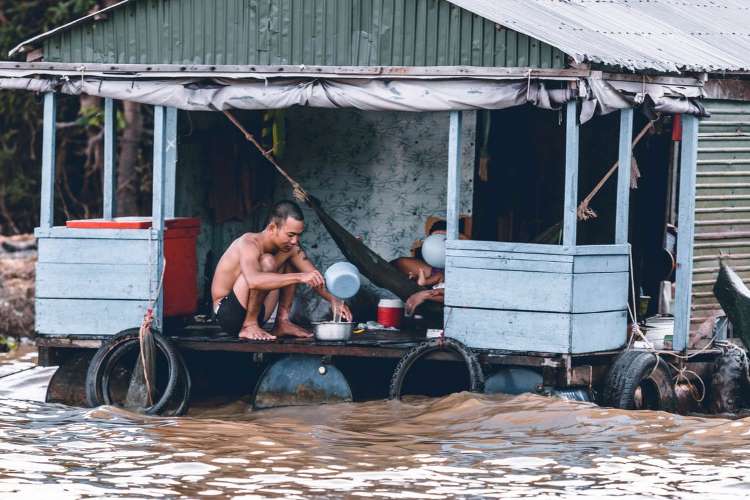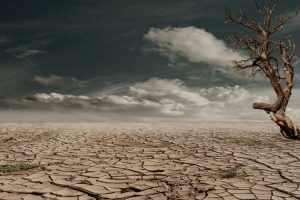
Climate endgame — Myth or reality: This summer was hard with most of the northern hemisphere experiencing severe heat waves. Climate change is affecting life on the planet through devastating wild fires, strong hurricanes, and severe floods, bringing untold miseries for the earth’s inhabitants.
An IPCC report released earlier this year says if the earth warms by 1.5 degrees Celsius above the pre-industrial levels, around 14% of plants and animals on land may face the risk of extinction. If the warming is 3 degrees, around 29% of species could face extinction. But, have such studies explored the risk of human extinction? The answer is an emphatic NO.

A recent study by a group of international scientists wants the world to prepare for the occurrence of a climate endgame that involves human extinction or a global societal collapse triggered by extreme weather events. While there is very little chance of a climate endgame occurring, such scenarios cannot be ruled out, says the study, Climate Endgame: Exploring catastrophic climate change scenarios, published in the journal Proceedings of the National Academy of Sciences.
Several manifestations of climate change are visible across the world, creating an urgency among governments as well as people at large. The problem is that all conversations on the subject are about preventing these catastrophic events from getting worse. The study says that while nations must continue their efforts to reduce greenhouse emissions, they should also prepare for the worst-case scenarios.

READ I Explained: America’s Inflation Reduction Act 2022 is more about environment
Four horsemen of climate endgame
While there are numerous factors contributing to climate-induced morbidity and mortality, the ‘four horsemen’ of the climate endgame — famine and undernutrition, extreme weather events, conflict, and vector-borne diseases — are the most devastating, says the study. The impact of these factors would be amplified by air pollution and a rise in sea levels. The study says the real impact of these four factors is hugely underestimated and would be revealed by deeper studies. It lists ways to account for the potential mass morbidity and mortality of extreme weather events.
- Track compound hazards through bottom-up modelling of systems and vulnerabilities, and stress test preparedness.
- Apply models to higher-temperature scenarios and longer timelines.
- Integrate risk cascades and systemic risks into health risk assessments.
Complex risk assessments are more realistic. A thorough study of risk must consider climate impact, differential exposure, systemic vulnerabilities, responses of societies and actors, and the knock-on effects across borders and sectors. With nations’ inability to curb emissions and population, at least two billion people could be living in places where the annual average temperature is higher than 84 degrees Fahrenheit by 2070.
READ I Brewing trouble: Climate change can aggravate threat of pathogenic diseases
Potential for climate catastrophe
The study cites four reasons why the world should worry about the likelihood of a global climate catastrophe.
Lessons from history: While extinctions are triggered by multiple factors, climate change has been a constant in all major mass-extinction events in Earth’s history. Cooling during the Ordovician-Silurian extinction wiped out 85% of species around 440 million years ago. Warming during the Triassic-Jurassic extinction killed 80% of species about 200 million years ago. Climatic changes played a role in the extinction of hominid species other than homo sapiens.
Climate change had a role in the collapse of human civilisations in Indus Valley, American continent, and Mesopotamia. A prolonged drought led to the downfall of ancient Greece. But humans have survived several climate fluctuations and fall of great civilizations, adapting to hot, cold, dry and wet climates. With modern scientific advancements, humans are likely to survive another climate catastrophe or global societal collapse.
Climate change could increase other risks: Extreme climate events could raise other catastrophic risks like global conflicts, infectious diseases, and spill over risk. Climatic events may work as extreme threat multipliers.
Climate change could exacerbate vulnerabilities: Climatic events may cause multiple, indirect stresses that could lead to system-wide simultaneous failures. Global crises may be triggered by such “synchronous failures” like the 2007–2008 global financial crisis that could devastate the world.
It is evident that climate change could have catastrophic manifestations. There is no certainty on when such endgames will kick in. Preparedness for extreme risks will increase potency of emergency responses. The study suggests that humanity should expand the research horizons to have a better understanding of the possible implications of climate change. Facing the future without an understanding of the worst-case scenarios could be fatally foolish.
Anil Nair is Founder and Editor, Policy Circle.

